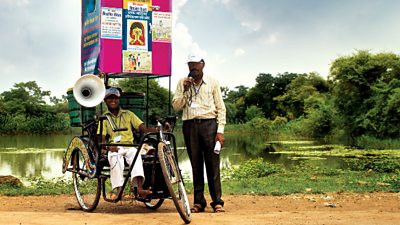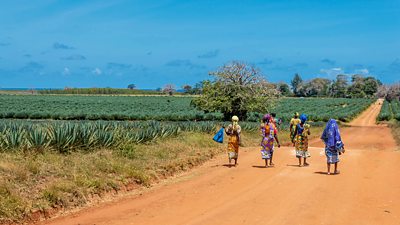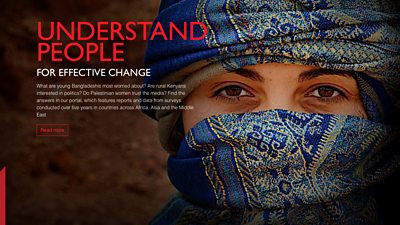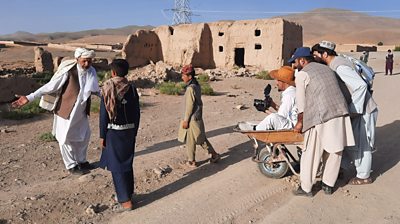Downloads
Publication: January 2023
91�ȱ� Media Action has been using mass media to help audiences recognise risks and keep safe from explosive ordnance (EO), which is widespread across Afghanistan following years of conflict. We conducted a panel study in 10 most affected provinces to evaluate the impact of our programme. We found that increased exposure to our content, which reached 5.4 million Afghans, was linked to increased ability to identify explosive ordnance risks; improved knowledge of what to do to keep safe; and increased discussion with others.
Context
According to the United Nations Mine Action Service (UNMAS), 46,868 Afghan civilians have been killed or injured by landmines and explosive remnants of war (ERW) since 1989 - averaging up to 160 people per month. In 2021 there was an increase in casualties to 1,144, 79% of whom were children. These were almost all (98%) caused by improvised mines and ERW from recent armed clashes. Since the Taliban takeover in August 2021, there has been an increase in people returning or moving to areas which were previously inaccessible due to conflict. Many of these areas remain heavily mined, but people are not aware of the risks, resulting in higher casualties (UNMAS 2022).
The project
In 2022, UNMAS commissioned 91�ȱ� Media Action to use mass media to help raise awareness and build public knowledge, helping people to identify and avoid contaminated areas and encouraging people to report any explosive hazards. 91�ȱ� Media Action broadcast content on its weekly Darman (Healing) radio magazine programme; aired radio PSAs in local languages across 44 local radio stations and the 91�ȱ� Afghan Service; broadcast TV PSAs on 10 local TV stations and two prominent national TV stations (Tolo and 1TV), and on the Open Jirga Facebook page.
Research methodology
We evaluated the impact of the programme through a longitudinal panel study with 400 participants in 10 provinces considered to be most vulnerable to EO/ERWs. A survey was conducted at the beginning (March 2022) and at the end of the project (July 2022), to measure any shifts in knowledge and attitudes amongst audience members. Participants were recruited on the basis that they were radio listeners but were not asked to listen to or watch the content produced as part of the project. They were called every two weeks for four months to monitor whether they had listened to or watched any of the content, to give a reliable measure of exposure, which was used in the analysis. Of the 374 participants remaining in the study at endline, 331 (88%) had watched or listened to at least some of the content. Data collected through a nationally representative survey with 2,800 participants was also used to measure the reach of programme outputs across Afghanistan. The social media content produced as part of the project was also evaluated using social media analytics.
Key findings
Mass media content reached 5.4 million people - 30% of the Afghan adult population
- Radio PSAs reached the most people (22% of adults), followed by the TV PSAs (18%), and then the Darman (Healing) radio programme (13%).
Audiences’ ability to identify explosive ordnance risks, their knowledge about, and intention to practice safe behaviours increased after watching or listening to the content
- 57% of panel participants had increased knowledge about safe and unsafe practices after watching or listening to the content, 66% demonstrated an increase in ability to identify signs of potential explosive ordnance risks, and 48% demonstrated an increase in their intention to practice safe behaviour.
- Regression analysis found that the more content participants were exposed to, the more likely they were to have higher knowledge, greater ability to identify EO risks, and greater intention to practice safe behaviour, even when controlling for demographic factors.
Audiences were more likely to discuss explosive ordnance with others, including children
- The more content participants were exposed to, the more likely they were to discuss EO with others.
- Exposure to content was also associated with discussion of EO with children, which is significant, but remains at a lower rate than discussion with adults.
We have learned about dangers of mines, and we can identify mines. For instance, when we go to a hill or mountain or a valley that is not a common route, and we see unidentified items, we do not touch those items.”
Both short and longer form content has an important role to play in explosive ordnance risk education
- PSAs are effective at drawing attention to the issue and TV is particularly effective when visual cues are needed - amongst audiences it was found that watching the TV PSA was the strongest predictor of increased ability to identify EO/ERW risks and discussion of EO/ERWs with others.
- Long form programming is better at addressing more complex issues for audiences as it is able to include discussion and examples - listening to Darman radio programme was the strongest predictor of increased knowledge about safe and unsafe practices and intention to act safely.
Key implications
- The programme achieved high reach amongst radio listeners but should now look at reaching audiences in rural at-risk areas who have no access to mass media; for example through mobile phones, passenger buses, or outreach with civil society organisations.
- Although the project was successful in increasing people’s discussion about EO with others, discussion with children (particularly those outside their own families) on this issue remains quite low. Given the vulnerability of young boys to injury and death from EO/ERWs, this should be addressed in future programming.
- Female audiences saw great knowledge gains but were less likely to discuss explosive ordnance with others. Future programming could seek to encourage women to discuss these issues, particularly with children.
For further information, please contact 91�ȱ� Media Action’s Afghanistan Research Manager mahdi.zaki@bbc.co.uk.
Our research library
-

Long reads
Read our comprehensive research reports of the evidence behind our work. All of our publications are freely available to download. -

Short reads
At a glance, explore key findings and evidence behind our work. All of our publications are freely available to download. -

By country
Explore our findings and analysis country by country. All of our publications are freely available to download. -
 What are young Bangladeshi's most worried about? Are rural Kenyans interested in politics? Do Palestinian women trust the media? Find the answers in our data portal (last updated 2020).
What are young Bangladeshi's most worried about? Are rural Kenyans interested in politics? Do Palestinian women trust the media? Find the answers in our data portal (last updated 2020).
